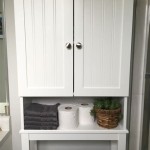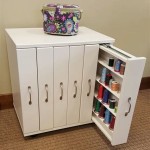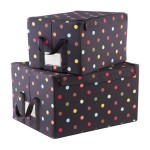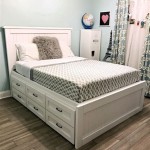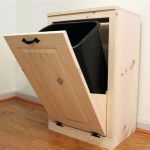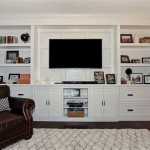Storage Ideas for Open Plan Living Rooms and Bedrooms
Open plan living, a design trend that emphasizes fluidity and spaciousness, often combines living rooms and bedrooms into a single, unified area. This design approach presents both aesthetic advantages and storage challenges. Successfully integrating storage solutions is essential for maintaining the visual appeal and functional harmony of an open plan space. Without effective storage, the area can quickly become cluttered, detracting from the intended sense of openness and relaxation.
The key to successful storage in open plan living lies in innovative, multi-functional approaches that blend seamlessly with the overall design. These solutions should not only provide ample space for belongings but also contribute to the aesthetic character of the combined area. Furthermore, understanding the specific needs of both the living room and bedroom functions is crucial. For example, living rooms typically require storage for media equipment, books, and decorative items, while bedrooms need space for clothing, bedding, and personal possessions.
Utilizing Vertical Space
One of the most effective strategies for maximizing storage in open plan spaces is to exploit vertical space. This approach involves utilizing the height of the walls to create storage solutions that don't consume valuable floor area. Tall bookshelves, reaching from floor to ceiling, are a classic example. These can house books, decorative objects, plants, and even incorporate closed cabinets for items that need to be concealed.
Floating shelves offer another versatile option for vertical storage. They can be arranged in various configurations to create visual interest and provide accessible storage for frequently used items. Consider using floating shelves to display artwork, plants, or decorative items, adding personality and character to the space. Wall-mounted cabinets provide enclosed storage, ideal for concealing clutter and maintaining a clean aesthetic. These cabinets can be customized with different door styles and finishes to match the overall design of the room.
Beyond traditional shelving, consider custom-built storage solutions that integrate seamlessly with the architecture of the space. For instance, a custom-designed headboard that incorporates shelving or cabinets can provide ample storage for books, lamps, and other bedside necessities. This approach not only maximizes storage but also creates a cohesive and integrated design.
Another vertical storage opportunity lies in utilizing the space above doorways. A shelf installed above a doorway can provide storage for less frequently used items, such as seasonal decorations or extra linens. This often-overlooked space can be transformed into a valuable storage asset.
When implementing vertical storage, it is important to consider accessibility. Ensure that items stored on higher shelves are easily accessible with a step stool or ladder. Also, consider the weight-bearing capacity of the walls and use appropriate hardware to ensure that shelves and cabinets are securely mounted.
Multi-Functional Furniture
Multi-functional furniture pieces are indispensable in open plan living spaces. These items serve multiple purposes, maximizing space utilization and minimizing clutter. Sofa beds, for example, can function as comfortable seating during the day and transform into a bed at night, providing a convenient solution for accommodating guests or optimizing space in a studio apartment. Coffee tables with built-in storage compartments offer a discreet way to store magazines, remote controls, and other living room essentials.
Ottomans with lift-up lids provide both seating and storage. These versatile pieces can be used as footrests, extra seating, or storage containers for blankets, pillows, or games. Storage benches are another excellent option, offering seating while providing ample storage space underneath. These benches can be placed at the foot of the bed, in a hallway, or near a window to create a cozy reading nook. Additionally, consider using nesting tables. These tables can be stacked together when not in use, saving space, and can be easily pulled apart when needed to provide additional surface area for entertaining.
Bed frames with built-in drawers are a popular choice for maximizing storage in the bedroom area. These drawers can be used to store clothing, shoes, or bedding, freeing up space in closets or dressers. Another innovative option is a platform bed, which offers a raised sleeping surface and ample storage space underneath. This space can be used to store large items, such as suitcases, seasonal clothing, or sports equipment.
When selecting multi-functional furniture, prioritize quality and durability. Choose pieces that are well-constructed and designed to withstand regular use. Also, consider the style and aesthetic of the furniture to ensure that it complements the overall design of the space. Multi-functional furniture should not only be practical but also visually appealing, contributing to the overall ambiance of the open plan area.
Finally, modular furniture systems offer a flexible and customizable storage solution. These systems consist of individual components that can be combined and rearranged to suit specific needs. Modular shelving units, for example, can be configured to create storage walls, room dividers, or customized storage solutions. The ability to adapt and reconfigure modular furniture makes it an ideal choice for open plan spaces where the layout and function may evolve over time.
Creating Visual Separation with Storage
In open plan spaces, it is important to define distinct living and bedroom areas to create a sense of order and privacy. Storage solutions can be strategically used to achieve this visual separation without completely blocking off the space. Bookshelves, for example, can be used as room dividers, creating a semi-private barrier between the living room and bedroom areas. Choose a bookshelf with an open back to allow light and air to flow through, maintaining a sense of openness while still defining the different zones.
Storage cabinets can also serve as room dividers. These cabinets can be arranged to create a partial wall, separating the living room from the bedroom. Consider using cabinets with decorative doors or panels to add visual interest and complement the overall design of the space. A storage unit can be used to house a television on the living room side and provide shelving for books and personal items on the bedroom side, effectively serving both spaces.
Screens or panels made of natural materials such as rattan or bamboo can also be used to create visual separation while adding texture and warmth to the space. These screens can be easily moved or reconfigured as needed, providing flexibility in defining the different zones.
Another creative approach is to use a storage headboard to create a visual barrier between the bed and the living area. A tall headboard with built-in shelving or cabinets can provide storage space while also defining the sleeping area. This type of headboard can also serve as a focal point in the bedroom, adding visual interest and character to the space.
Plants can also be used to create a natural room divider. A row of potted plants can be used to define the boundary between the living room and bedroom, bringing a touch of nature into the space. Choose plants that are appropriate for the lighting conditions and that complement the overall design of the room. Consider using plants of different heights and textures to create a visually appealing and dynamic divider.
When using storage to create visual separation, it is important to consider the overall flow of the space. Ensure that the dividers do not obstruct pathways or create awkward angles. The goal is to create distinct zones while maintaining a sense of openness and connectivity.
In addition to large storage pieces, smaller decorative items can also be used to delineate space. Rugs, for example, can be used to define individual zones within the open plan area. A rug placed under the bed can define the bedroom area, while a separate rug in the living room can define the seating area. The use of different colors and patterns can further enhance the visual separation.
Lighting can also play a crucial role in defining different zones. Different lighting fixtures can be used to create distinct atmospheres in the living room and bedroom areas. For instance, softer, warmer lighting can be used in the bedroom to create a relaxing atmosphere, while brighter, more focused lighting can be used in the living room for reading or entertaining.
Ultimately, the key to successful storage in open plan living rooms and bedrooms lies in careful planning, creative solutions, and a commitment to maintaining a clutter-free environment. By utilizing vertical space, incorporating multi-functional furniture, and strategically using storage to create visual separation, it is possible to create a space that is both functional and aesthetically pleasing.

60 Simple But Smart Living Room Storage Ideas Digsdigs

25 Clever Bedroom Storage Ideas To Keep Your Space Organized

Our Top 10 Open Plan Spaces Galliard Homes

Great Living Room Bedroom Combo Ideas Layout Tips Styling The Nordroom

10 Small Living Room And Bedroom Combo Makeover

How To Design An Open Plan Kitchen And Living Room

Our Top 10 Open Plan Spaces Galliard Homes

54 Simple Ideas For Small Living Room Dining Combo Edward George

25 Best Clothes Storage Ideas For Small Bedrooms

Minimalist Living Room Decor
Related Posts


